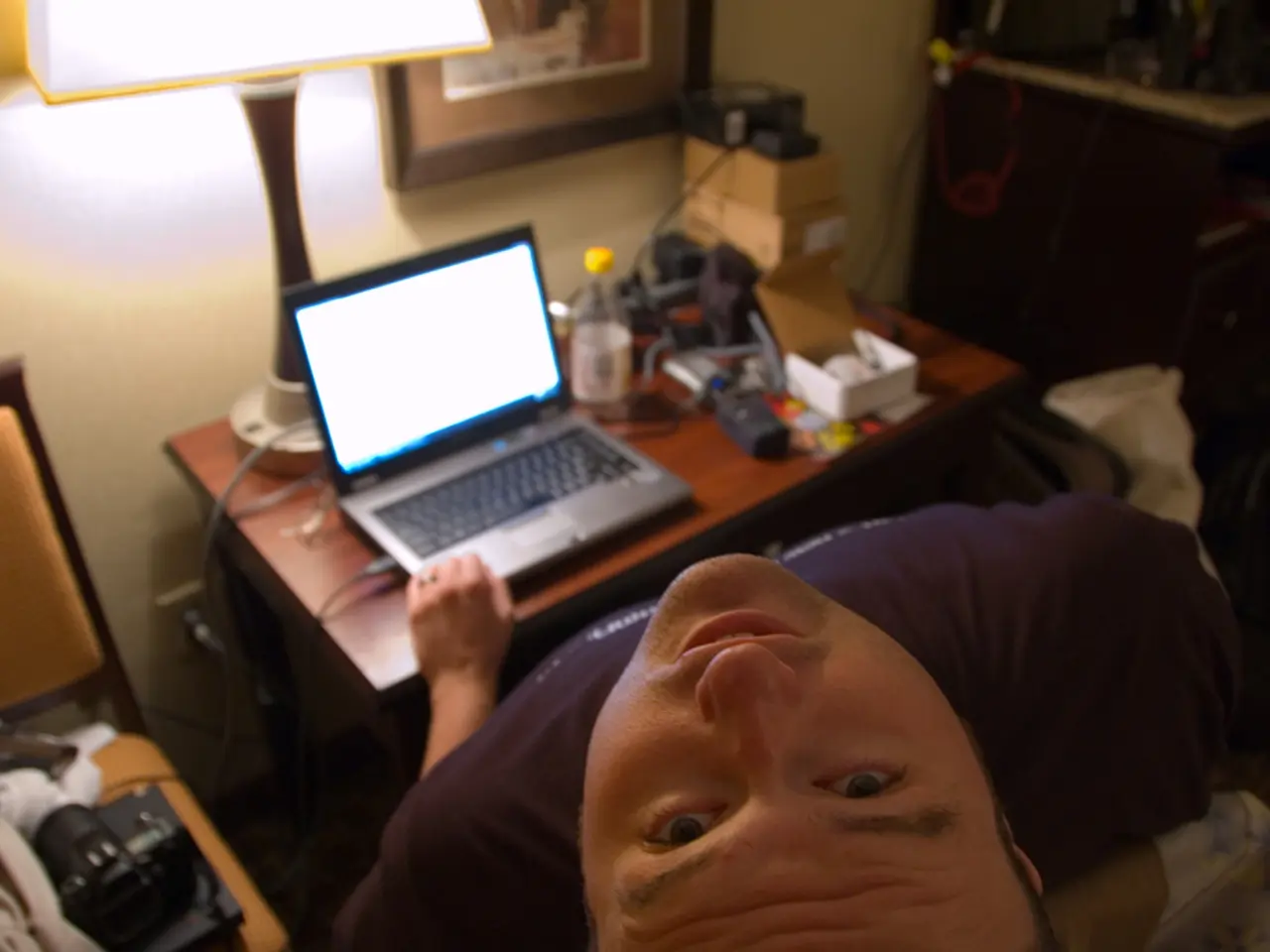Routines to counteract dizziness or spinning sensations (Vertigo)
In the event of experiencing vertigo, it is crucial to consult a doctor for a proper diagnosis and treatment plan. Two effective exercises for managing peripheral vertigo, particularly Benign Paroxysmal Positional Vertigo (BPPV), are the Epley maneuver and Brandt-Daroff exercises.
The Epley maneuver is a canalith repositioning procedure designed to move dislodged calcium crystals (otoconia) in the semicircular canals back to their proper location in the utricle. This procedure involves a sequence of four specific head and body position changes, typically performed with the help or instruction of a healthcare provider. The Epley maneuver is particularly safe and effective for BPPV, resolving positional vertigo in about 75% to 80% of patients, often within hours or days of treatment.
To perform the Epley maneuver for vertigo resulting from the right ear, sit on the edge of a bed, turn the head 45 degrees to the right, quickly lie back, maintain this position for 30 seconds, turn the head 45 degrees to the left, maintain this position for 30 seconds, turn the head and body another 90 degrees to the left, maintain this position for 30 seconds, and slowly sit up. If vertigo results from the left ear, begin the Epley maneuver by turning the head 45 degrees to the left.
The Brandt-Daroff exercises are habituation exercises aimed to break up and disperse the calcium crystals causing vertigo. They consist of sitting upright, turning the head to one side, then quickly lying down on the opposite side while keeping the head turned, holding for about 30 seconds or until dizziness stops, then sitting up again and resting. These exercises can be done at home and are especially useful when the Epley maneuver is not feasible, such as in patients with neck or back problems.
These exercises, particularly the Epley maneuver, target the underlying pathophysiology of BPPV, helping to reduce or eliminate vertigo symptoms over days to weeks. For best outcomes and safety, these exercises should be done under healthcare supervision, especially initially, to confirm diagnosis, ensure proper technique, and rule out other causes of vertigo. If symptoms do not improve after a few weeks, reevaluation is recommended.
Besides these exercises, balance and habituation exercises may be advised in cases of vestibular neuritis or similar peripheral vertigo causes. Antibiotics may be prescribed by a doctor if vertigo is due to a bacterial ear infection. Antihistamines or antiemetics may be prescribed or recommended by a doctor to help reduce motion sickness and nausea associated with vertigo. Some people find home remedies such as ginger tea or Ginkgo biloba beneficial for managing vertigo symptoms.
It is essential to remember that vertigo is a sensation of spinning or dizziness that can affect a person's ability to do day-to-day activities. Peripheral vertigo, accounting for approximately 80% of vertigo cases, results from a problem with the inner ear or vestibular nerve. Central vertigo, accounting for roughly 20% of vertigo cases, results from an issue relating to the brain.
In conclusion, the Epley maneuver and Brandt-Daroff exercises are effective ways to manage BPPV, a health issue that causes peripheral vertigo, often due to the displacement of calcium-carbonate crystals in the inner ear. These exercises, when performed correctly and under medical supervision, can significantly improve or eliminate vertigo symptoms.
- Science has provided predictive methods in health-and-wellness, such as the Epley maneuver, which can accurately diagnose and treat Benign Paroxysmal Positional Vertigo (BPPV), a condition causing dizziness.
- The predicted resolution rate of positional vertigo through the Epley maneuver is around 75% to 80%, offering a hopeful solution for those suffering from this condition.
- Given the relationship between HIV and a compromised immune system, the risk of developing vertigo might be higher for individuals living with HIV, requiring preventive measures and proper healthcare monitoring.
- Mental-health, fitness-and-exercise, and overall health-and-wellness are interconnected, as maintaining physical fitness can contribute to improved mental health and reduce the incidence of health issues like vertigo.
- Given the potential for various causes of vertigo, it is crucial to consult with a healthcare provider not only for a proper diagnosis and treatment plan but also to predict possible complications and reduce health risks associated with this condition.




